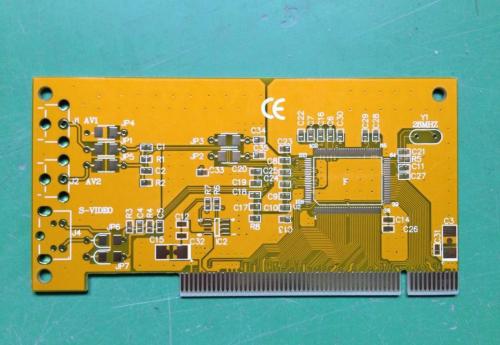 +86 755 2794 4155
+86 755 2794 4155  sales@knownpcb.com
sales@knownpcb.com
-
Shenzhen KNOWNPCB Technology Co., Ltd.
 +86 755 2794 4155
+86 755 2794 4155  sales@knownpcb.com
sales@knownpcb.com
 2023-12-14
2023-12-14
 378
378

Negative film of circuit board: Generally speaking, it is the tenting process that uses acidic etching negative film because after the film is made, the desired circuit or copper surface is transparent, while the unwanted parts are black. After exposure by the circuit process, the transparent part hardens chemically due to the exposure of the dry film inhibitor to light. The subsequent development process will wash away the dry film that has not hardened, So in the etching process, only a portion of the copper foil (the black part of the film) that has been washed off by biting off the dry film is retained, while the circuit (the transparent part of the film) that belongs to our desired circuit (PCB sample) is retained. We will tell you about the positive of the circuit board. Generally, this is the pattern process we are talking about, and the solution used is alkaline etching positive. If viewed from the negative, the desired circuit or copper surface is black, while the other parts are transparent. Similarly, after exposure in the circuit process, The transparent part undergoes chemical hardening due to the exposure of the dry film inhibitor to light. The subsequent development process will wash away the unhardened dry film, followed by the tin lead plating process. The tin lead is plated on the copper surface that was washed away by the previous process (development) dry film, and then the film is removed (to remove the dry film hardened by light). In the next etching process, alkaline solution is used to bite off the copper foil without tin lead protection (the transparent part of the film), The rest is the circuit we need (the black part of the film)
Positive and negative films are actually selected based on the processes of each company. Positive film: the process is (double-sided board) cutting - drilling - PTH (once electroplated, also known as thickened copper) - circuit - two copper (graphic electroplating) and then using SES line (film removal - etching - tin removal). Negative film: the process is (double-sided board) cutting - drilling - PTH (once electroplated, also known as thickened copper) - circuit (not electroplated with two copper graphics) and then using DES line (etching - film removal)
① Distinguishing the mother film, working film, positive and negative film, and film surface of film: Film can be divided into mother film and working film (sub film), black film and yellow film, positive film and negative film; ② Generally speaking, the master film is black film, also known as silver salt film, which is mainly used to replicate working films (yellow films, also known as diazo films). However, working films may not only have yellow films, but there are also black films used as working films. They are mainly used for high-precision HDI boards or in one-time small batch circuit board production to save costs. Yellow films are used for ordinary boards and batch production of ordinary circuit boards When distinguishing the drug film surface, the black film has a glossy surface, while the yellow film has the opposite. Generally, by scraping a pen or blade on the film, you can see which side is the drug film surface. (Mother tablet: positive and negative medicine surface, sub tablet: positive and negative medicine surface) ④ When using yellow tablets, please note that there are two types: smooth and matte, and both types are prone to oil surface indentation. ⑤ A negative film that transmits light on a film circuit (with copper), while a positive film that does not transmit light; The PCB board sample tells you that the positive film is used for graphic electroplating, which develops the circuit and leaves behind a corrosion-resistant electroplating, mainly coated with lead and tin. The negative film is used for direct etching, and the anti corrosion area left after development is the circuit, which is directly etched with acidic etching solution.

Or call +86 755 2794 4155
Inquiry Now

